As I rounded a bend while walking a trail on a cool day earlier this spring, I spotted a colony of wildflowers blooming a few inches above ground level.
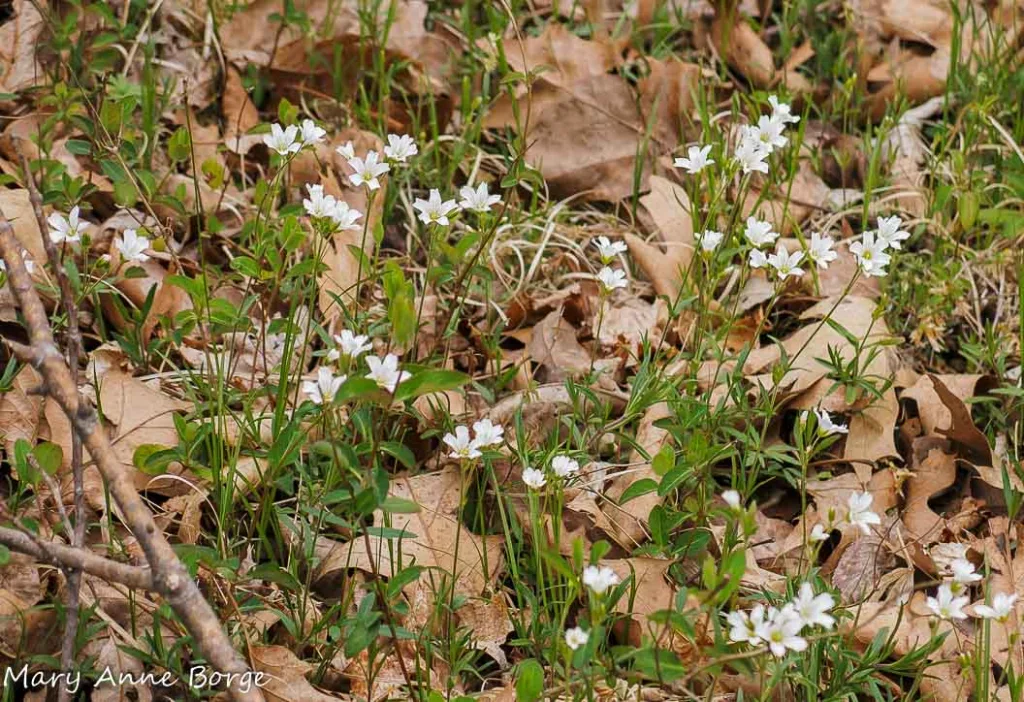
My first thought was that it must be Spring Beauty (Claytonia virginica), whose blossoms were beginning to carpet the forest floor, but I quickly realized it must be something else. These flowers were a purer white, showing no hint of the pink nectar guides and anthers that add a bit of blush to Spring Beauty’s floral display.
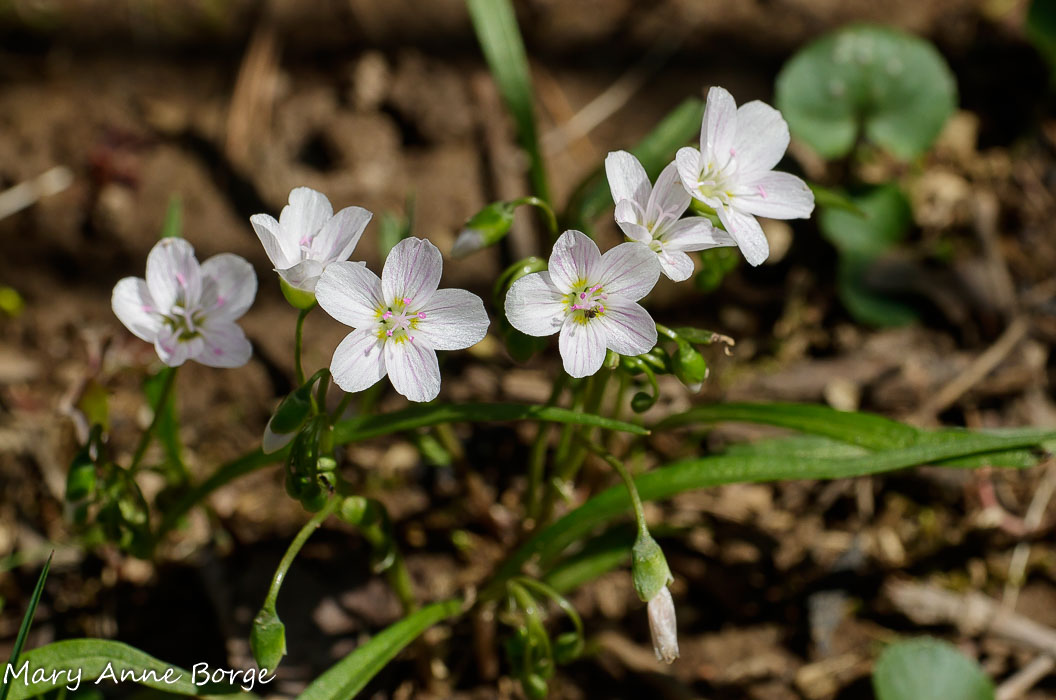
Clearly this was a different species. I needed to take a closer look.
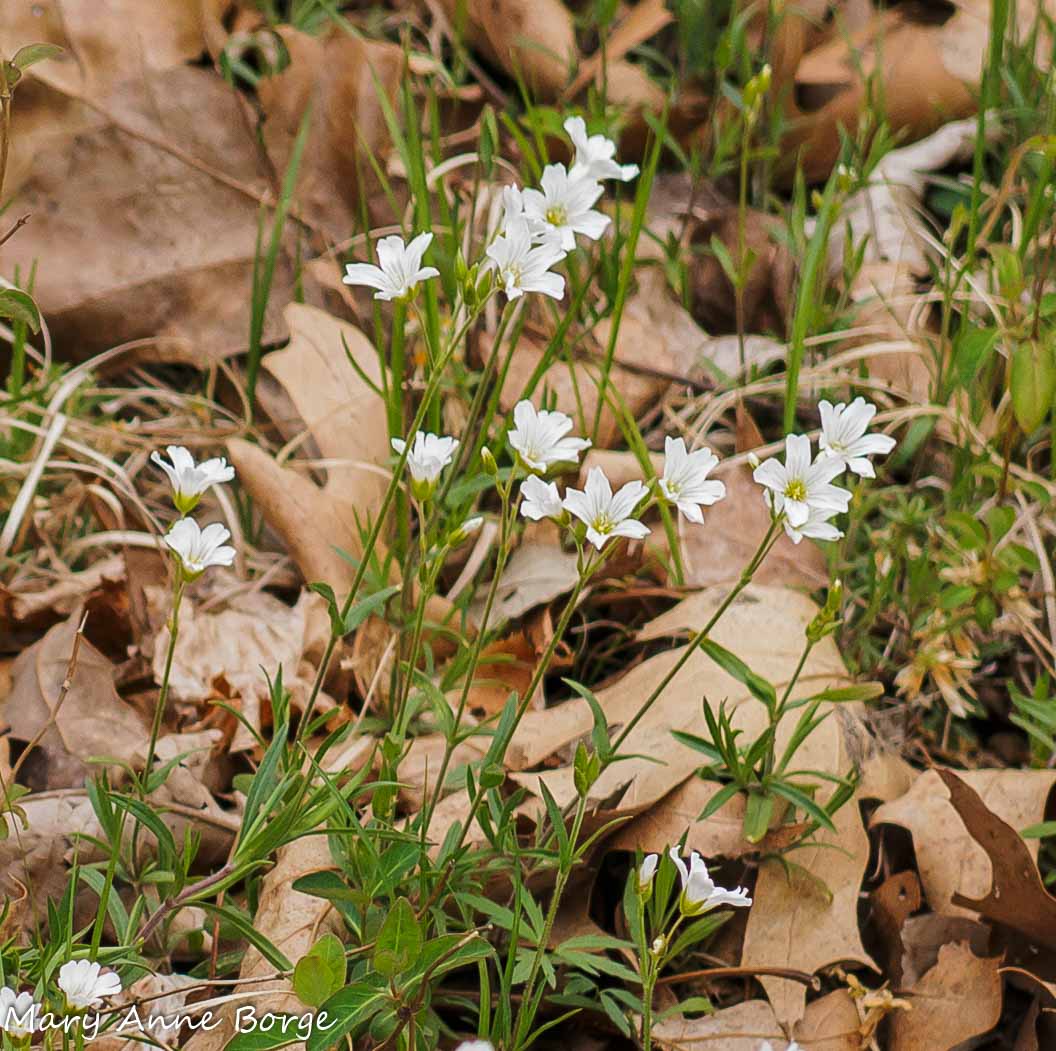
While these plants were similar in height to Spring Beauty, they were more erect, less sprawling. Their leaves were short, opposite each other along the stem, with additional leaves at the base of the plant.
The flowers had five distinctly lobed petals, and instead of pink striping, these had soft gray nectar guides beckoning pollinators to visit.
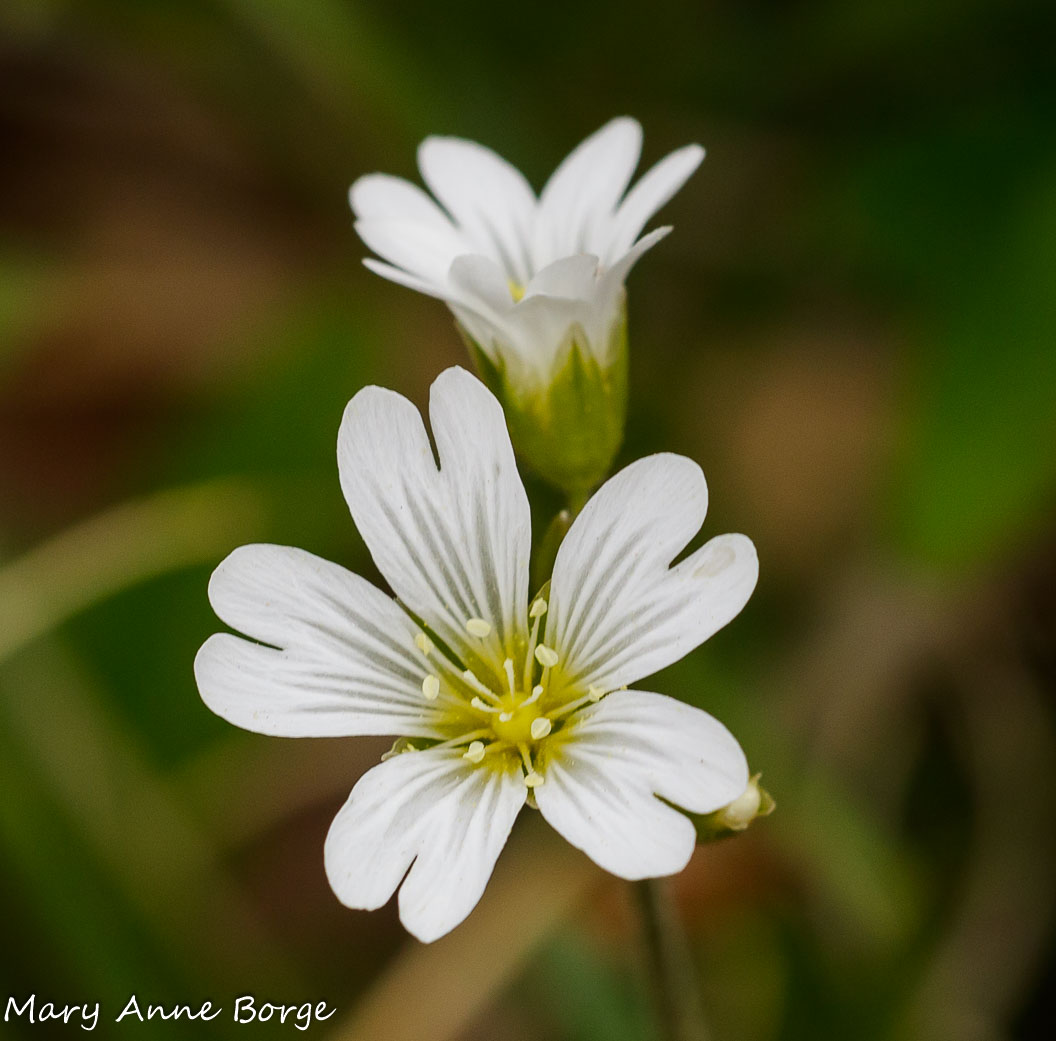
A little investigation yielded the identification as Field Chickweed (Cerastium arvense ssp. strictum), a plant native throughout much of Canada and the United States (except Kansas, Oklahoma, Texas, Louisiana, Virginia, North Carolina, South Carolina, Alabama, and Florida). In spite of Field Chickweed’s wide range, this was my first encounter with it. This perennial chickweed is often found on cliffs, rocky slopes, ridges, ledges or beaches. Fittingly, I met this small beauty on a rocky western-facing slope near the Delaware River in the Sourland Mountains in New Jersey.
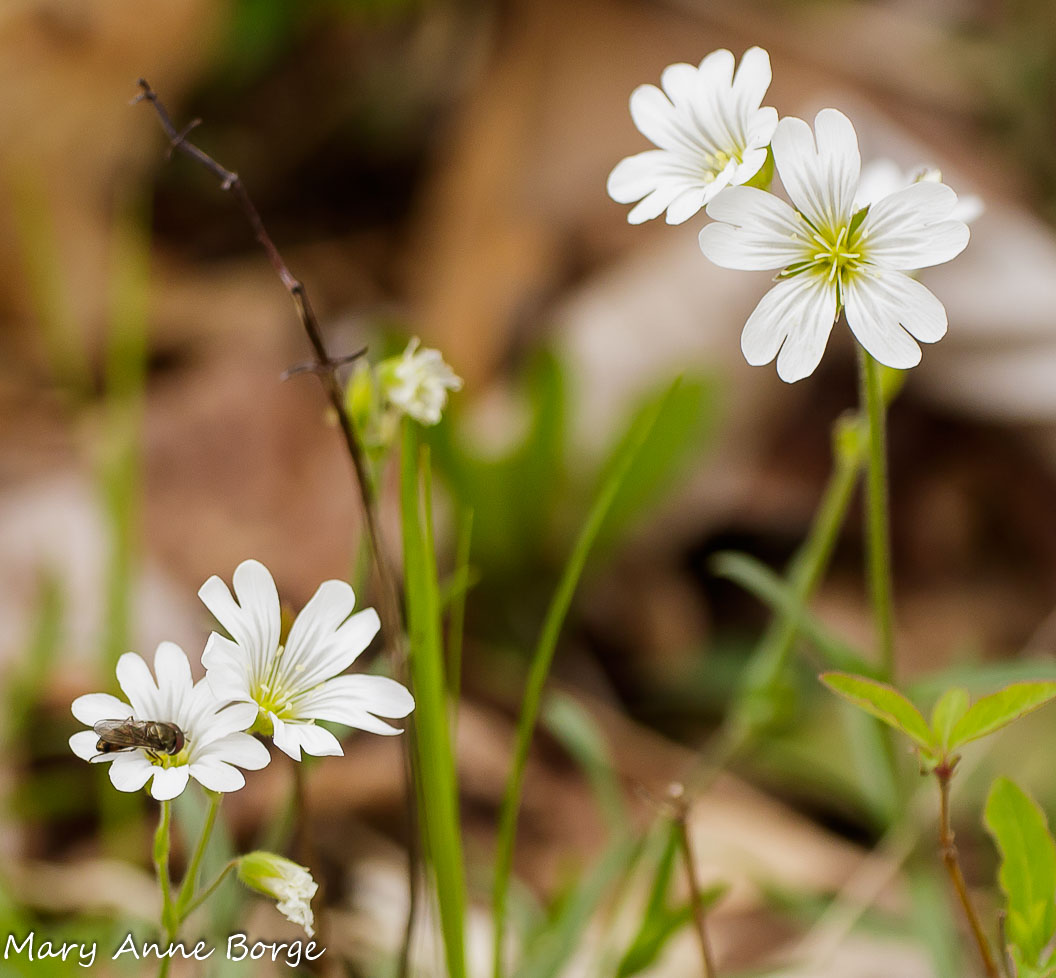
The primary pollinators documented for this species are a number of bees, including small carpenter bees, cuckoo bees, mason bees, sweat bees, and mining bees. Conveniently located nearby were nest entrances for some ground nesting bees who may have been frequent diners at the Field Chickweed flowers.
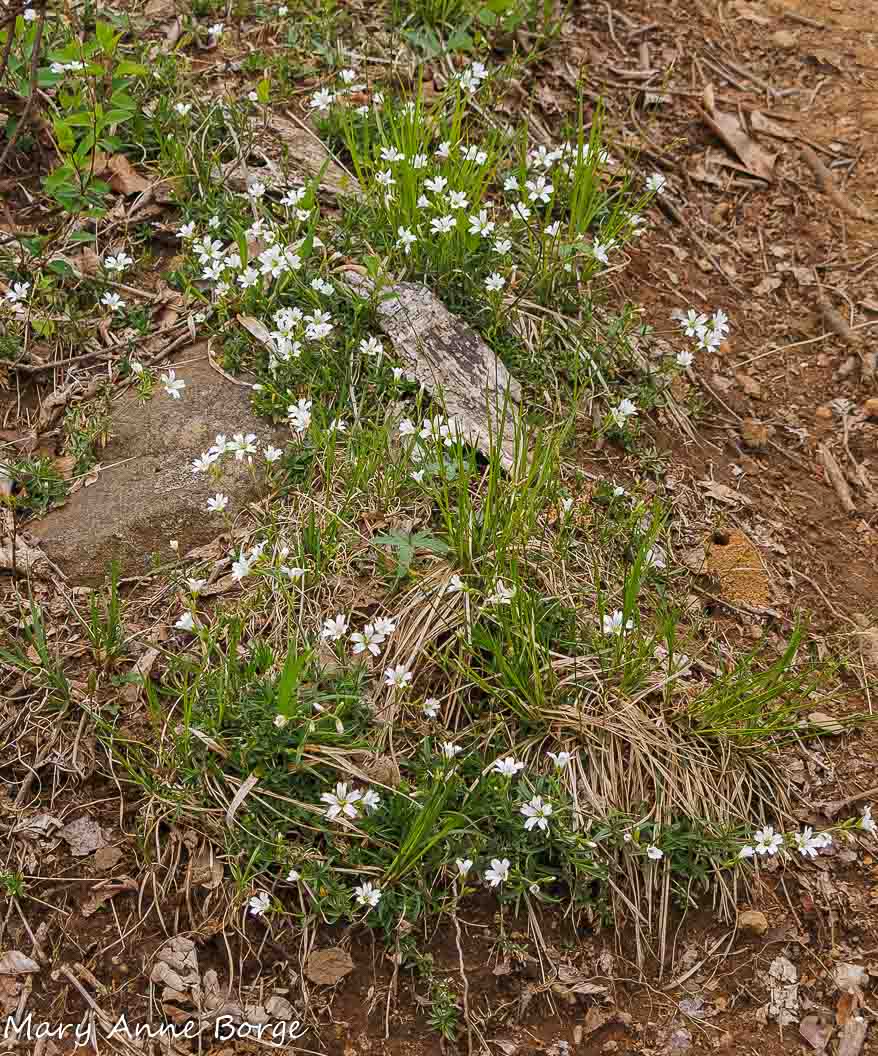
In contrast to the documentation I found for this plant, the pollinators I encountered were all flower flies (also known as hover flies or Syrphid flies).
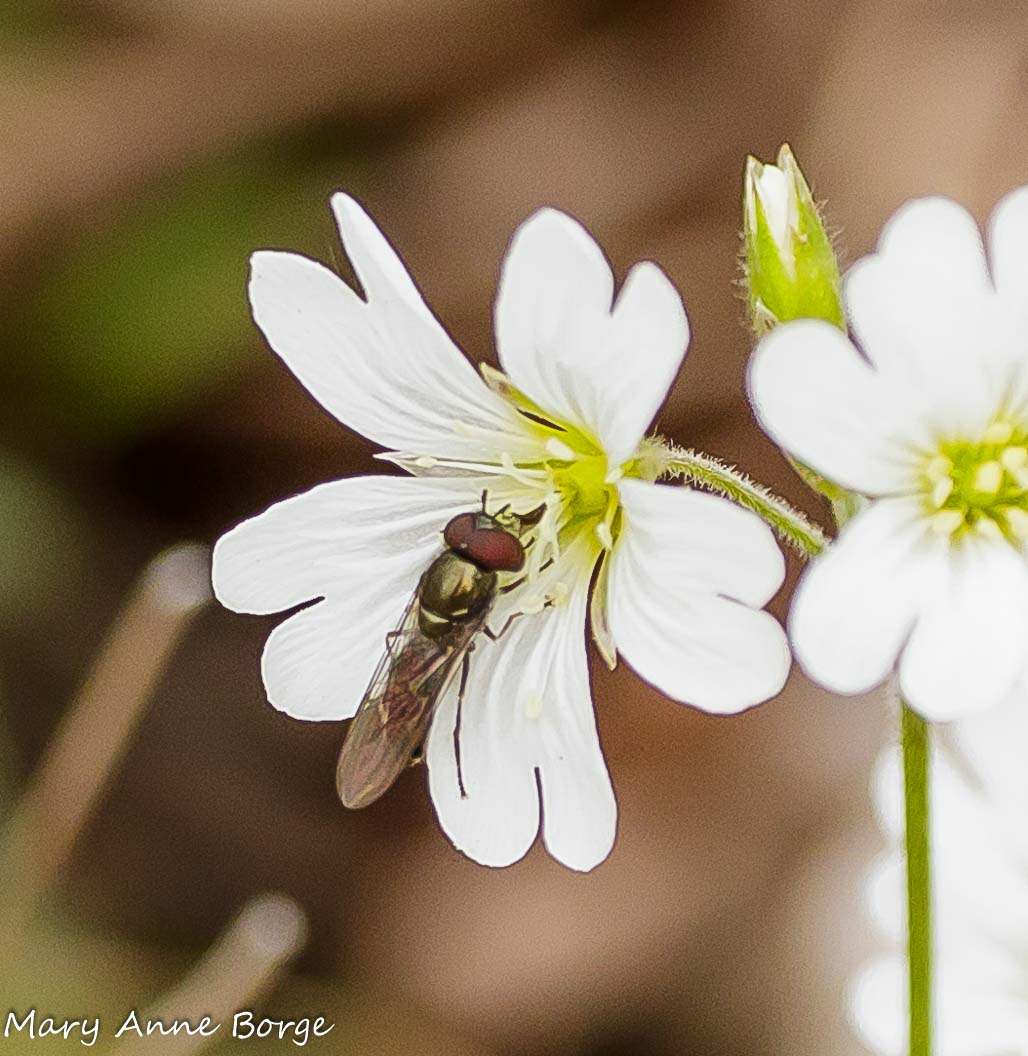
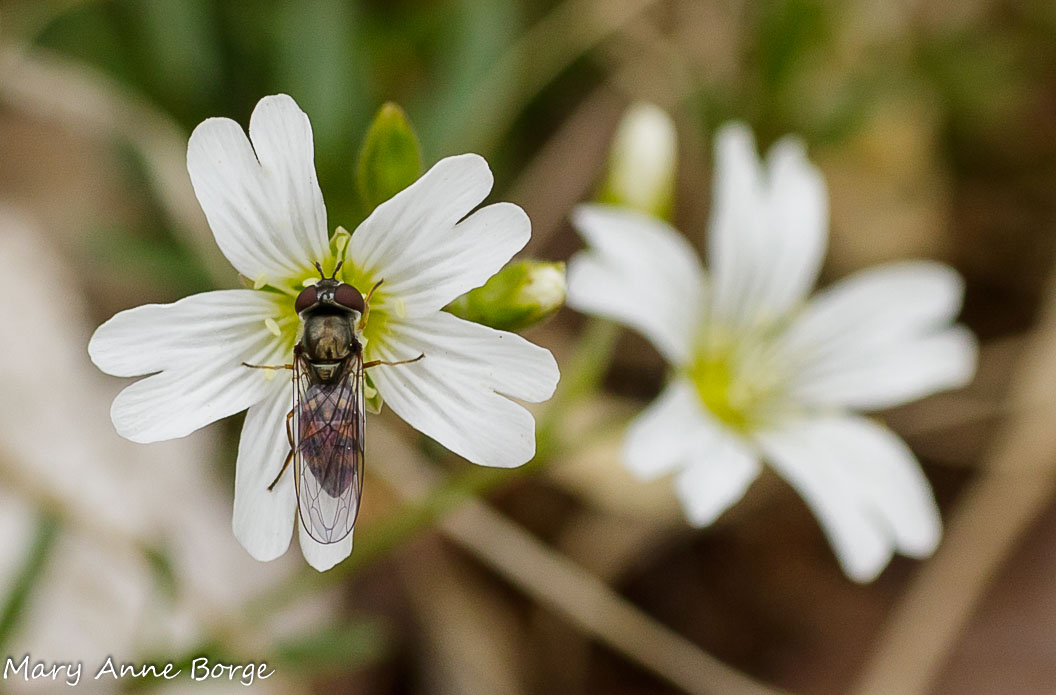
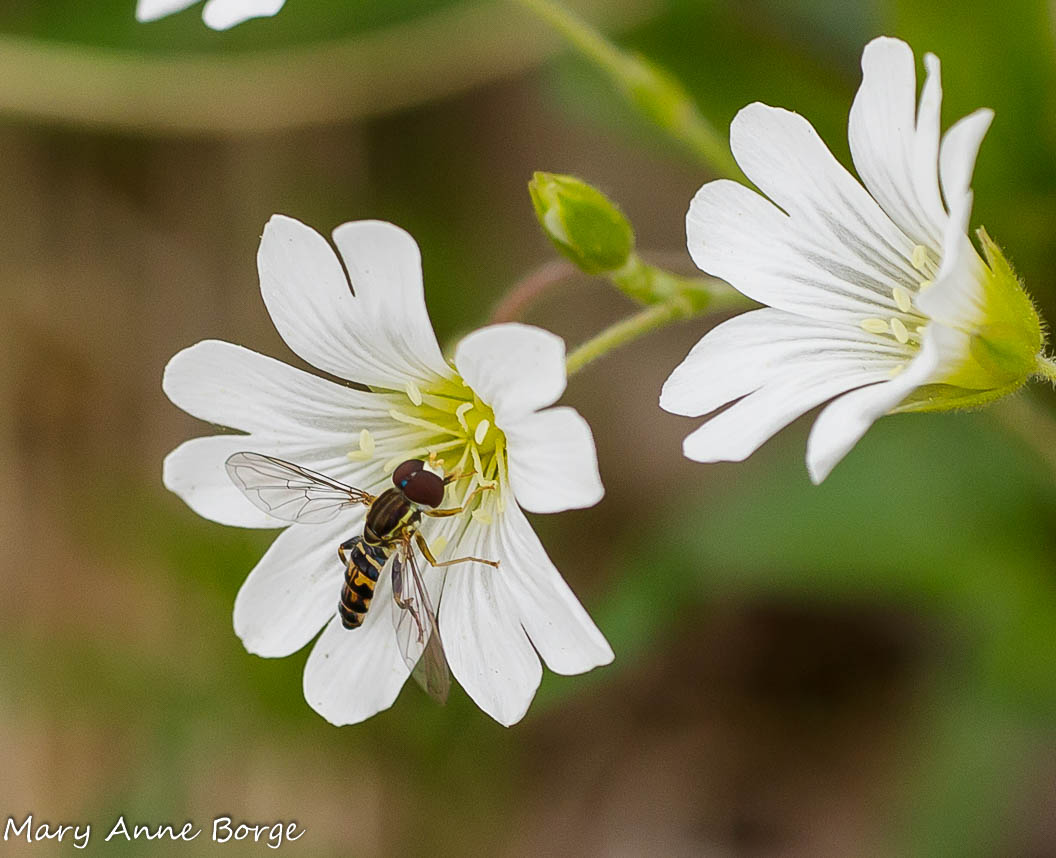
Flower flies are named for their frequent visits to flowers to drink nectar and eat pollen, and for their ability to hover in the air. Flies are important pollinators, especially in spring and fall when the weather is cool, because they are able to fly at lower temperatures than many bees.
The seeds of this and other chickweeds are eaten by many birds and small mammals, including mice.
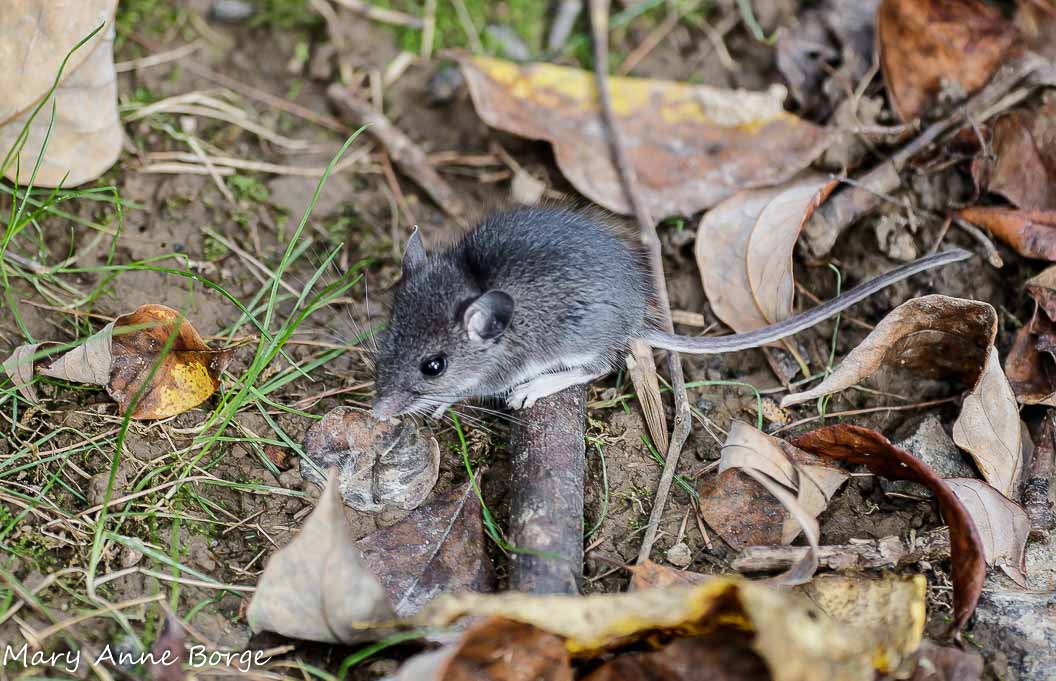
Those small mammals may become food for other animals, like this Red Fox.
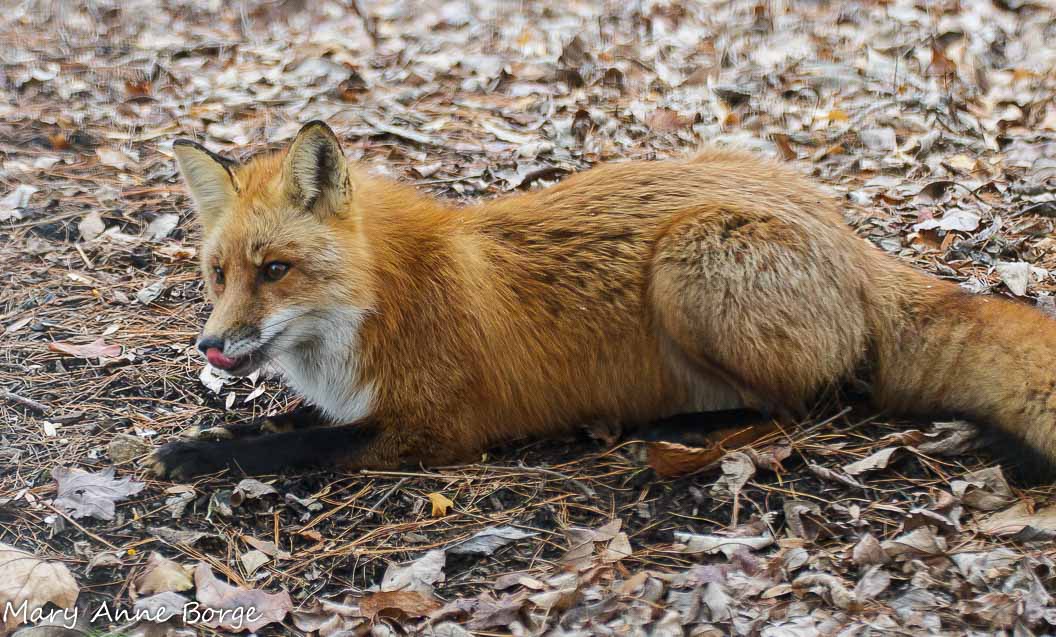
Field Chickweed is a lovely little native plant quietly doing its job in the ecosystem. I’m happy to have made its acquaintance.
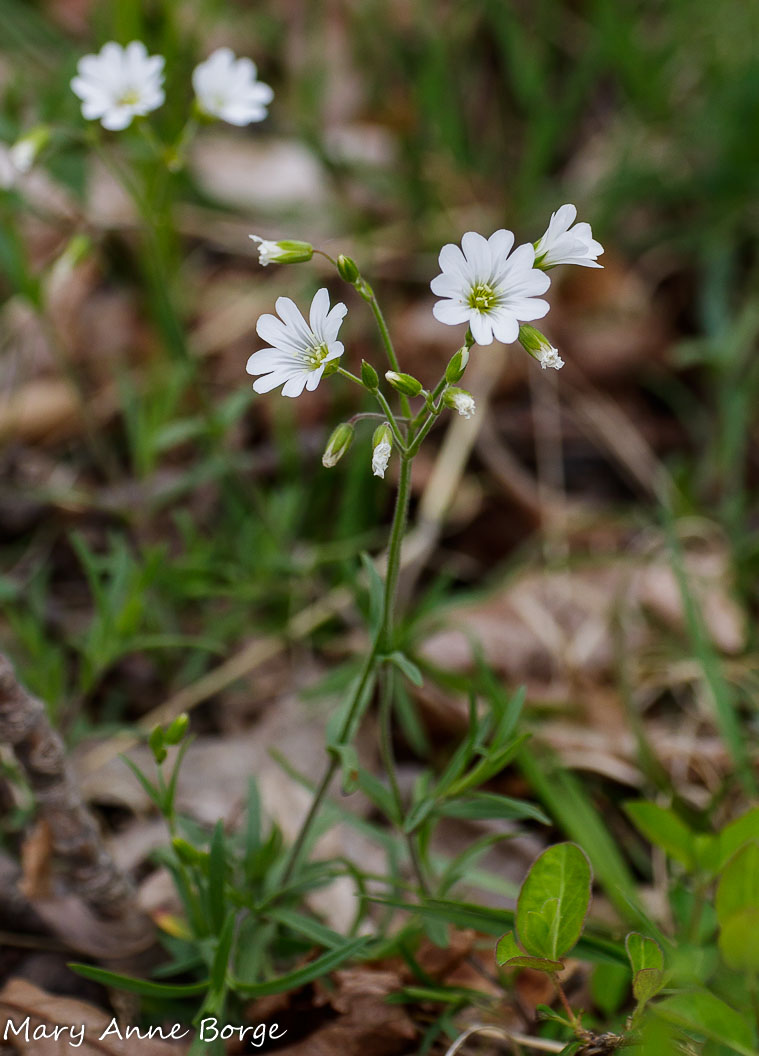
Related Posts:
Resources
Eaton, Eric R.; Kauffman, Ken. Kaufman Field Guide to Insects of North America. 2007.
Skevington, Jeffrey H.; Locke, Michelle M.; Young, Andrew D.; Moran, Kevin; Crins, William J.; Marshall, Stephen A. Field guide to the Flower Flies of Northeastern North America. 2019.
